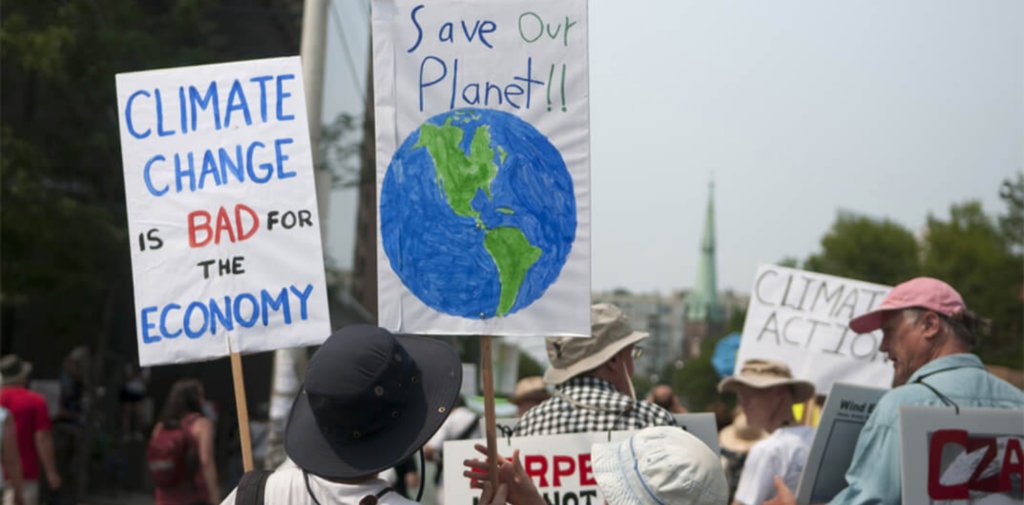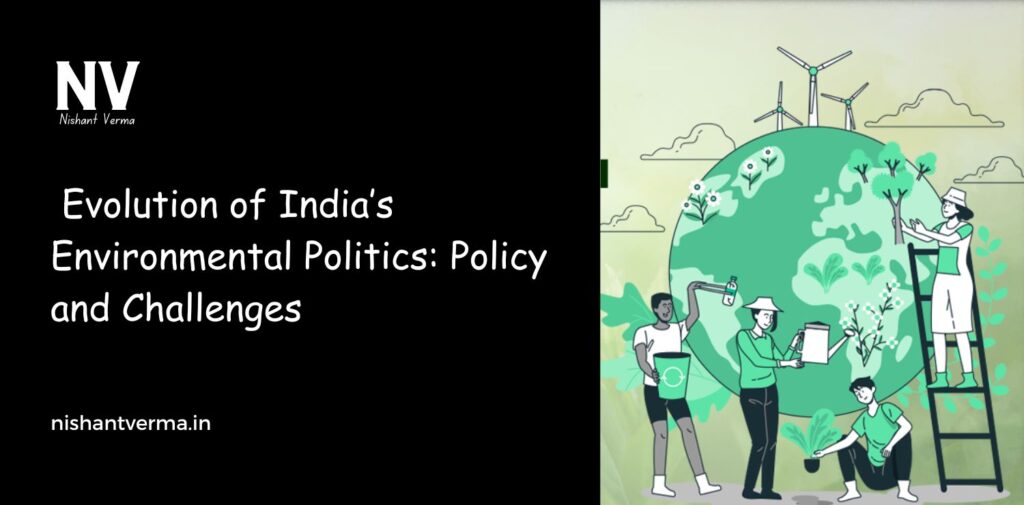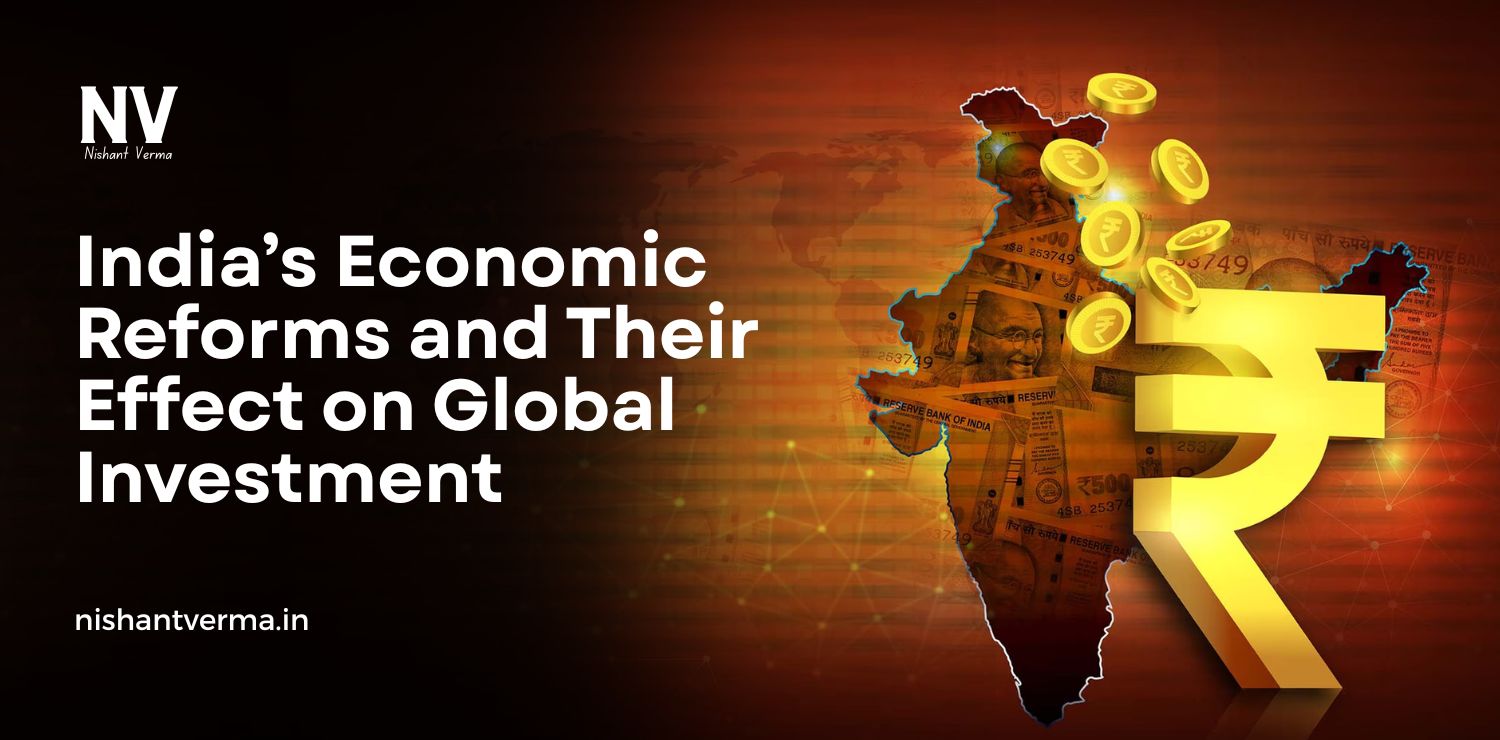India is a country with a rich diversity of nature—beautiful rivers, forests, mountains, and wildlife. But over the years, the environment has faced many problems due to growing industries, urbanization, and population growth. The politics around protecting the environment has been an important part of India’s history, especially after independence. In this article, we will talk about how India’s environmental politics have evolved, the policies that have been introduced to protect nature, and the challenges that still remain.
What is Environmental Politics?
Environmental politics is the way governments and people work together to protect nature and make sure the environment is safe and healthy. It involves making laws and policies that help conserve forests, rivers, air, and wildlife. In India, environmental politics has grown more important over time as people have become more aware of environmental issues like pollution, deforestation, and climate change.

The Early Days After Independence
After India gained independence in 1947, the country focused mainly on building its economy. There was a need for industries, factories, and more urban development to provide jobs and improve the country’s infrastructure. During this time, the environment was not given much importance. There were no strong laws to protect nature, and many natural resources were being used without thinking about the long-term consequences.
At this stage, the idea of balancing development with environmental protection was not yet fully understood. However, there were a few early efforts to protect the environment. For example, in the 1950s and 1960s, the government set up national parks and wildlife sanctuaries to protect animals and forests. These were some of the first steps toward recognizing the importance of nature.
The 1970s: The Turning Point
The 1970s marked a turning point in India’s environmental politics. The world was becoming more aware of environmental issues, and this awareness started to reach India as well. The air pollution, water pollution, and deforestation caused by industrial growth became more visible, and people started talking about these problems. This decade saw the first major movement for environmental protection in India.
In 1972, India participated in the first United Nations Conference on the Human Environment in Stockholm. This event made India realize the need for global cooperation to address environmental challenges. Soon after, in 1973, the government passed the Wildlife Protection Act, which aimed to protect wildlife from poaching and habitat destruction.
One of the most famous environmental movements in India also took place in the 1970s. It was called the Chipko Movement, where villagers, mostly women, hugged trees to stop them from being cut down. This movement highlighted the importance of forests and the need to protect them for future generations.

The 1980s: More Laws and Awareness
In the 1980s, India began to develop a more formal environmental policy. The government introduced several laws to address growing environmental concerns. One of the most important pieces of legislation was the Environment Protection Act of 1986, which allowed the government to take strict actions against industries causing pollution.
During this time, people began to understand that development should not come at the cost of the environment. The National Environment Policy was also introduced, which focused on the idea of sustainable development—developing the country in a way that would not harm nature in the long run.
In the 1980s, India also faced major environmental disasters that made people more aware of the need for better protection. For example, in 1984, the Bhopal Gas Tragedy occurred, when a gas leak from a factory caused thousands of deaths and harmed the environment. This incident made people realize that industries could be dangerous to both people and the environment.
The 1990s: Globalization and New Challenges
The 1990s brought a wave of change to India’s economy. The country opened up to the world by reducing trade barriers and encouraging foreign investment. This period of globalization led to more industrial growth, urbanization, and an increase in environmental problems like air and water pollution.
During this time, India faced new challenges in balancing economic growth with environmental protection. The government introduced more policies to deal with the environmental impact of industrialization. One such policy was the National Forest Policy of 1988, which aimed to protect and expand forests across the country.
In 1992, India attended the Earth Summit in Rio de Janeiro, Brazil, where countries around the world discussed ways to protect the environment. India committed to following the Rio Declaration on sustainable development, which emphasized the need to protect nature while also improving the economy.
The 2000s: Climate Change and Environmental Awareness
In the early 2000s, India began to face more serious environmental challenges due to climate change, such as rising temperatures, droughts, and floods. The country also faced pressure to reduce its carbon emissions, as climate change became a global issue. India became a part of international agreements like the Kyoto Protocol and later the Paris Agreement, which aimed to limit global warming.
India’s environmental policies started focusing more on renewable energy sources, like solar and wind energy, to reduce dependence on coal and other polluting resources. The government also introduced programs like National Action Plan on Climate Change in 2008 to deal with the impacts of climate change.
The 2000s also saw increased awareness among the people about environmental issues. Environmental NGOs, activists, and media started pushing for better protection of nature. The Save the Ganga movement, for example, called for cleaning up the holy river and reducing pollution. People began to realize that protecting nature was not just the government’s job, but also their own responsibility.

The 2010s and Today: Urgent Action Needed
In the 2010s, India faced some of the worst environmental challenges in its history. The air quality in many cities became so bad that it started affecting the health of millions of people. Water scarcity became a major issue, with many rivers drying up and groundwater levels going down. Forests continued to be cut down for urban expansion, and wildlife habitats were being destroyed.
To address these issues, India introduced the Swachh Bharat Abhiyan in 2014, a nationwide campaign to clean up streets, rivers, and public spaces. This was a step in the right direction, as it encouraged citizens to take part in keeping the environment clean. In the same period, India also made big investments in renewable energy and became one of the world’s leaders in solar power.
However, challenges remain. Climate change continues to affect India, with extreme weather events becoming more common. Urbanization continues to grow, and industries still pollute the air and water. The struggle to balance economic growth with environmental protection is ongoing, and many believe that urgent action is needed to address these issues.
Conclusion: The Future of India’s Environmental Politics
India has come a long way in terms of environmental protection, from the early days of industrial growth to the more recent focus on sustainability. The government has introduced many laws and policies to protect nature, but the country still faces serious challenges. The air is polluted, rivers are drying up, and climate change is affecting the lives of millions of people.
The future of India’s environmental politics depends on how well the government, industries, and citizens work together to find solutions. It is important to continue pushing for policies that promote sustainable development, reduce pollution, and protect natural resources for future generations.
In the coming years, India needs to continue its efforts to protect the environment while also meeting the needs of its growing population. This will require both political will and the active involvement of every citizen, from the government to the young children who can grow up to be the next generation of environmental protectors. The future of India’s environment lies in the hands of all its people, and together, we can make sure that nature is preserved for the generations to come.




